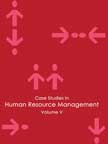Microsoft People Problems
|
|
ICMR HOME | Case Studies Collection
Case Details:
Case Code : HROB035
Case Length : 15 Pages
Period : 1994-2006
Pub Date : 2003
Teaching Note : Available
Organization : Microsoft Corp.
Industry : Information Technology and Related Services
Countries : USA
To download Microsoft People Problems case study
(Case Code: HROB035) click on the button below, and select the case from the list of available cases:

Price:
For delivery in electronic format: Rs. 400;
For delivery through courier (within India): Rs. 400 + Rs. 25 for Shipping & Handling Charges
» Human Resource and Organization Behavior Case Studies
» HRM Short Case Studies
» View Detailed Pricing Info
» How To Order This Case
» Business Case Studies
» Area Specific Case Studies
» Industry Wise Case Studies
» Company Wise Case Studies

Please note:
This case study was compiled from published sources, and is intended to be used as a basis for class discussion. It is not intended to illustrate either effective or ineffective handling of a management situation. Nor is it a primary information source.
Chat with us

Please leave your feedback

|
|




<< Previous
Excerpts
The Antitrust Controversy
|
In 1998, Microsoft became embroiled in antitrust proceedings initiated by the US
government. The charges against Microsoft were that the company tried to use its
vast asset base and huge cash pile to gain an unfair advantage over its
competitors. The government accused Microsoft of bundling Internet Explorer with
Windows 95 to force customers to purchase both products, and modifying Sun
Microsystems' Java language to make it Windows-compatible. In December 1999,
after a series of preliminary hearings and interviews, the Department of Justice
(DoJ) and 19 states formally filed papers arguing that Microsoft had violated
antitrust laws. (Refer Exhibit I for an overview of the antitrust rules in the
US).
|

|
In early 2000, Bill Gates stepped down as the chief executive
of the company, and Steve Ballmer, who was then head of sales, took over. Later
that year, the district court ruled that Microsoft be spilt into two – one
division to provide Operating systems, and the other for application packages...
Increasing Attrition
Till the 1990s, Microsoft had one of the lowest voluntary attrition rates in
the highly volatile software industry. The attrition rate at Microsoft was
about seven percent, which was approximately half the average rate in the
industry. From the mid 1980s, after its phenomenal IPO, to the late 1990s,
Microsoft was the favorite destination of job seekers in the US as well as
the rest of the world. Microsoft grew at a dizzy pace and quickly became one
of the most powerful companies in the world...
|
|
No Challenges
Microsoft had always been characterized by a culture that was
extremely competitive. Employees jokingly called it the 'we'd better
get going' culture. When the company introduced new products to rave
reviews and rocketing sales, the people responsible for the products
did not meet to celebrate. Instead, they did a post-mortem of what
could have been done better. The company had always been
competitor-centric, and Gates often sent out memos to employees
about the competitive threats ahead. These were popularly referred
to as 'call-to-arms' memos... |
Disadvantages of Size
Another important reason for leaving was the feeling that the company had become
too big. Its large size made Microsoft lose some of the elements of work culture
that had made it the favorite destination of job seekers in the late 1980s.
People who left believed that size hurt Microsoft in many ways. As the company
grew, the bureaucracy increased and internal politics started playing an
important part in regular proceedings. It no longer had the flexibility of a
startup and it was becoming very difficult to push decisions through the system.
There were five layers of management, which impeded quick decision-making...
Excerpts Contd...>>
|
|










